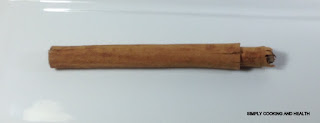 |
| Ceylon cinnamon |
Cinnamon was so highly prized among ancient nations that it was regarded as a gift fit for monarchs and even for a god. Cinnamon is native to Bangladesh, Sri Lanka, the Malabar Coast of India, and Burma.
Cinnamon is a condiment used extensively in Asian, Middle Eastern and North African cuisine. Cinnamon is a popular flavoring in numerous alcoholic beverages.
There are two main types of cinnamon:
Ceylon cinnamon (Cinnamomum verum) is often considered to be "true cinnamon". Ceylon cinnamon is the trading name of the product in the commodities market. Ceylon cinnamon comes from Sri Lanka, India, the Caribbean and Brazil.
Cassia cinnamon or Chinese cinnamon (Cinnamomum aromaticum), originates from southern China, Indonesia, Burma and Vietnam. It is less expensive than Ceylon cinnamon.
Ceylon Cinnamon is particularly popular because it has low levels of Coumarin compared to Cassia Cinnamon. Coumarin in high concentrations is known to cause liver and kidney damage. A study found Cassia Cinnamon was more effective than Ceylon Cinnamon at controlling blood sugar. An easy solution is to therefore double the dosage of Ceylon Cinnamon, since even doubling the dosage will not come close to the high Coumarin levels found in Cassia Cinnamon. Cinnamon also thins the blood.
Ceylon cinnamon has a soft, thin, smooth bark with a light-yellowish brown colour and highly aromatic fragrance. Cassia cinnamon has a hard bark compared to the Sri Lankan variety. Most commercially prepared foods in the USA and Western Europe, including sticky buns, breads and other products use the cheaper Cassia cinnamon. Cinnamon is regarded as the second most popular spice, next to black pepper, in the United States and Europe.
The bark of the plant is used as spice. Cinnamon oil is produced from the bark and leaves of the plant. Cinnamon oil and cinnamon leaf oil are extracted using steam distillation.
Cinnamon can be used to help treat muscle spasms, vomiting, diarrhea, infections, the common cold, loss of appetite, and erectile dysfunction, according to the U.S. National Library of Medicine.
Cinnamon is also used in the treatment of fungal infections, Alzheimer's disease, HIV, Multiple Sclerosis, and chronic wounds. It is also said to lower the negative effects of high fat meals. Cinnamon has powerful antioxidants, such as polyphenols. It reduces levels of total cholesterol, LDL cholesterol and triglycerides, while HDL cholesterol remains stable.
 |
| Ceylon cinnamon |
Cinnamon also lowers the blood sugar level in type 2 diabetic patients. Most type 2 diabetic patients use balsam pear (bitter gourd) as a home remedy. But it has been found that consuming balsam pear for long time can weaken the knees and cause knee pain. Therefore it is safer to use cinnamon than balsam pear.
Nutrition information on cinnamon is in the USDA database here.
No comments:
Post a Comment